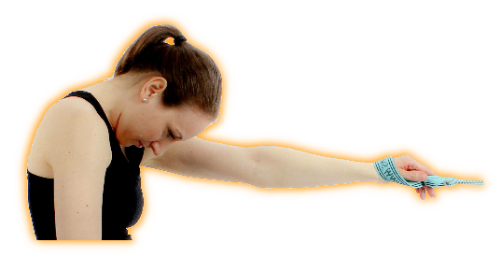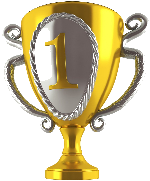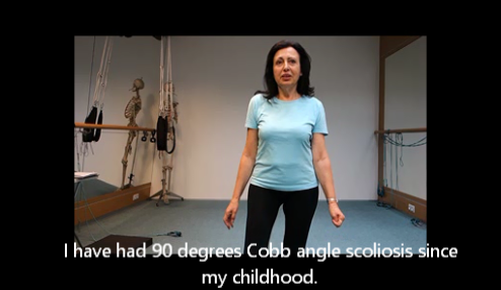PERSONAL TRAINING SERVICES
London & UK & Other Countries
Central & Greater London
What is the relationship between psychological factors and musculoskeletal pain
in your SM-System (spiral stabilization method)?A postural attitude (the stand in space) is defined by human phylogeny that has been going on for ages. The main types of motion having most effect on a postural attitude are walk, run and operation of arm in full vertical range. However, these activities have recently been greatly replaced with sitting jobs. Insufficient natural motion significantly changes the tasks the motion apparatus has to perform therefore the posture holding musculature gets overloaded and its antagonists weakened. The dynamic motion is then achieved by operation of the static muscular groups which typically rest during dynamic motion. This is why the static muscular groups get enormously overloaded and the motion’s qualities as well as the coordination of the motion deteriorate. SPS offers compensation of the natural motion: muscular groups get balanced and functional again, and the posture becomes vertical.A postural attitude is also influenced by other factor such as distress, weariness, depression, pain, etc. A human body responses to the distress as taught by phylogeny: getting the muscles ready for an attack or escape (run). In both the cases all energy of the body is mobilized to achieve maximum performance. A long term distress without proper compensation causes a stress postural attitude. A stress postural attitude makes certain muscular groups go shortened and their antagonists weakened.SPS exercise brings vertebrae in ideal position in regards to the vertical line, upward traction in between each vertebra is achieved which releases foramina intervertebrali as well as spinal roots coming through. Intervertebral functions consequently allow sufficient blood supply in the room that has been deprived of blood, nutrients and drain of metabolic product due to the distress pathologic posture attitude. Regular SPS exercise normalises muscular tonus which improves blood distribution in body peripheries, brain, endocrine glands (thyroid and hypophysis) and viscera. Numerous viscera disorders are caused by hypoperfusion and can be positively influenced by normalisation of the muscular tonus via SPS exercise.Improved blood flow drains accrued product of metabolic processes in soft tissue therefore the pain in the musculoskeletal system decreases. However, strictly individual approach and respect towards the unique needs of the client are necessary. The exercise must never exceed the threshold of pain, and the motion must keep within the limits of feeling painless.Clients with chronic exhaustion enjoy regular exercise of SPS which allows them to stretch in vertical line with the neck vertebrae #7 (C7) affecting the functions of thyroid whose malfunctioning demonstrates in weariness, depression, aching joints, feeling cold and constipation. Release of the tension in the neck spine of clients who suffer from an increased distress via regular exercise of SPS makes cephalgia decrease or even disappear completely, swallowing improve, perfusion of peripheries improve, and the quality of brain functions grow better thanks to normalisation of the blood flow in brain (release of the tension of nape muscles).The exercise also releases endorphins and enkephalins, which has positive effect on the limbic system (centre of emotion), therefore it is a way to treat clients suffering from psychosomatic disorders and depressions too.Positive effects aforementioned show the importance a healthy spine and healthy blood flow of a central nervous system in a good quality of life. I hope all clients performing SPS exercise shall enjoy the beneficial effects of this technique and enjoy fruitful lives in smoothly operating bodies.
writen by Nika Konecna, physiotherapist, RU Hrabynetranslated by Jana Mitackova, general manager SMS/SPS for UK and world
MY STORYAdela Mitackova - Spiral Stabilization teacher trainer
"Scoliosis patient becoming teacher trainer"I have had 90 degrees Cobb angle scoliosis since my childhood.I used to do ordinary rehabilitation exercises since the age of 9. I spent even several years in an institution for children with physical disabilities. For the last 6 years I have been intensively exercising using the SM system method. That's why I became SM system teacher trainer after MUDr. Smisek's recommendation. I teach and promote the method further because it's truly amazing and beneficial for scoliosis.I was on disability benefits for two decades but thanks to MUDr. Smisek I work full time now.Previously I suffered from terrible pain even though I exercised daily. Unfortunately nothing helped. Thanks to the SM system I can live a good quality life.I exercise several times a day to minimise and prevent pain which allows me to sit and walk. In the past I could only walk and do usual daily activities for maximum one hour. I then had to lie down and rest to release the pain.Whereas now I exercise using the SM system elastic cord for only 10-15 minutes to stretch, increase blood supply and release muscle tension which makes the pain to subside.I can now live great quality life without restrictions and limitations thanks to the elastic cord which will be my companion and exercise tool for the rest of my life. I can also travel which is my favourite hobby.I can only recommend the SM system (spiralstabilization) method.Adela, Czech Republic
Historical courses on these webpages
Current courses are on website Spiralstabilization LTD
LondonCOURSE TUTOR: Dr Richard Smisek, CzechCOURSE ORGANISER: Jana Mitackova, general manager SMS/SPS for UKANDLondonCOURSE TUTOR: Jana Mitackova, general manager SMS/SPS for UK an WORLDCOURSE ORGANISER: Jana Mitackova, general manager SMS/SPS for UK and WORLD
Indication for SM-SYSTEM, spiralstabilization methodInternational desease classifikationM40.- Kyphosis and lordosisM41.- ScoliosisM42.- Spinal osteochondrosisM43.- SpondylolysisM43.1 SpondylolisthesisM45.- Ankylosing spondylitisM47.- SpondylosisM48.- Other SpondylopathiesM48.0 Spinal stenosisM50.0 Cervical disc disorder with myelopathyM50.1 Cervical disc disorder with radiculopathyM50.3 Other cervical disc degenerationM51.0 Lumbar and other intervertebral disc disorders with myelopathyM51.1 Lumbar and other intervertebral disc disorders with radiculopathyM51.4 Schmorl´s nodesM53.0 Cervicocranial syndromeM53.1 Cervicobrachial syndromeM53.2 Spinal instabilitiesM54.- DorsalgiaM54.1 RadiculopathyM54.2 CervicalgiaM54.3 SciaticaM54.4 Lumbago with sciaticaM54.5 Low back painM54.6 Pain in thoracic spineM16.- Coxarthrosis (arthrosis of hip)M17.- Gonarthrosis (arthrosis of knee)M20.1 Hallux valgus (acquired)M21.4 Flat foot (pes planus) (acquired)M23.- Internal derangement of kneeM75.- Shoulder lesionsM76.- Enthesopathies of lower limb, excluding footM79.1 MyalgiaM81.- Osteoporosis without pathological fractureM35.7 Hypermobility syndromeR26.- Abnormalities of gait and mobilityR42.- Dizziness and giddinessR51.- HeadacheG43.- MigraineE66.0 Obesity due to excess caloriesI10.- Esential (primary) hypertensionI25.- Chronic ischaemic heart diseaseJ45.- AsthmaR00.- Abnormalities of heart beatR07.- Pain in throat and chestK30.- DyspepsiaN70.1 Chronic salpingitis and oophoritisN81.- Female genital prolapseN94.- Pain and other conditions associated with female genital organs and menstrual cycleN96.- Habitual aborterN97.- Female infertilityR32.- Unspecified urinary incontinenceN30.2 Other chronic cystitisN41.- Inflammatory disease of prostateN46.- Male infertilityK40.- Inguinal herniaK43.- Ventral herniaK56.- Paralytic ileus and intestinal obstruction without herniaK91.- Postprocedural disorders of digestive system, not elsewhere classifiedG36.- Other acute disseminated demyelinationG80.- Celebral palsyR26.- Abnormalities of gait and mobility






